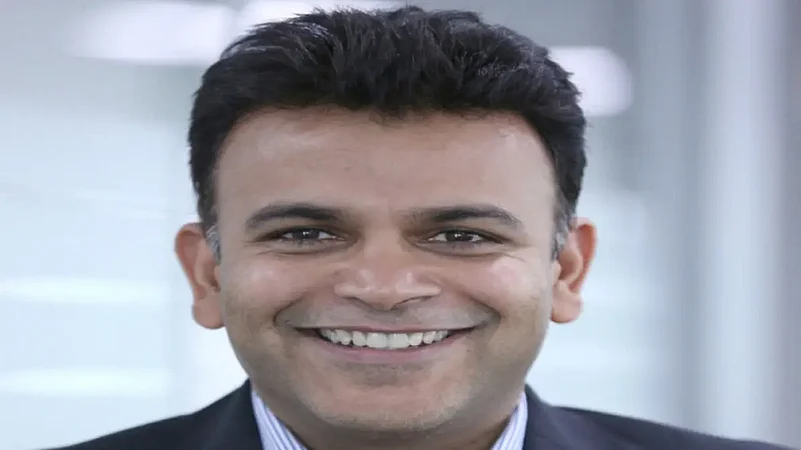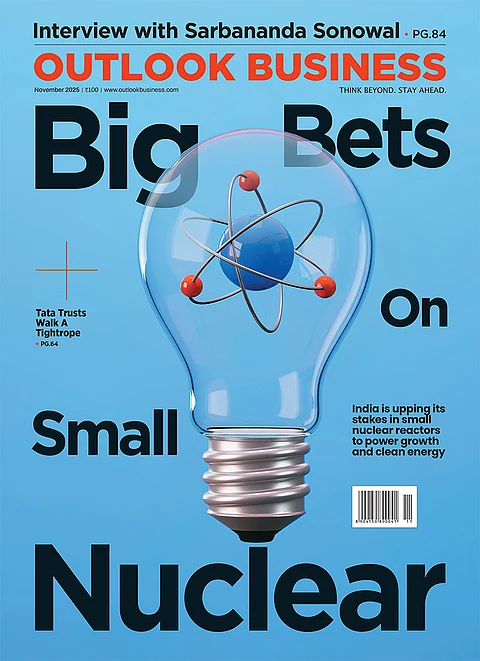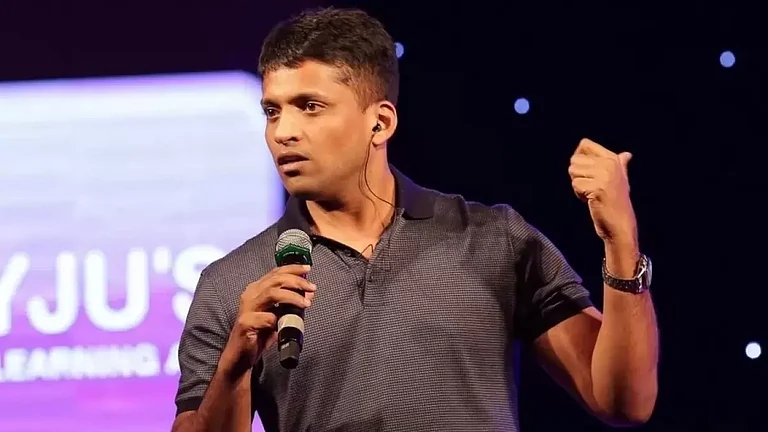In 2016, Amazon Pay began its India operations as a prepaid wallet service. In 2019, it started its peer-to-peer payment operations adding support for UPI soon. Today, Amazon Pay Later – Amazon’s credit business -- has received 37 lakh customer sign-ups with the platform witnessing a 99.9 per cent payment success rate. Vikas Bansal, Director, Amazon Pay India, spoke with Outlook Business about the company’s confidence in the credit business and its India plans. Edited excerpts:
NPCI’s Jan’22 data shows that Amazon Pay had 73.50 million transactions worth Rs 6,729.66 crore. How does the company see its business panning out in India vis-à-vis players like Google Pay, PhonePe or even Paytm?
I wouldn't comment on competition. But it’s a fact that India continues to be a cash-driven economy -- about 70 per cent of retail payments are still in cash. While we have made a lot of progress in the last five years, it’s not a winner takes all market; many players will co-exist and contribute to digitising the economy. Apart from UPI, we have credit and debit cards, we have the Amazon pay wallet, and we have the buy-now-pay-later offering. It is a variety of payment options and a variety of use cases. We have invented offerings with the goal to remove friction, remove cash, and create trust amongst customers. We're working backwards from who the customer is and giving the option which is best suited for the customer.
Would it be fair to say that UPI is the supporting aspect of a business that is primarily into making finances available through cards?
It’s not just about supporting, it’s about importance. UPI has really touched every customer in India and we continue to invest in that. It gives a mobile-based payment solution that you can easily set up if you have a functional account and a functional debit card. As for the Amazon Pay network is concerned, we are present in more than 350 cities and towns of India, and the primary mode of payment is through UPI. Plus, more than 75 per cent of our customers who use Amazon UPI come from Tier II and Tier III cities. It also talks about the reach that our offering has with the customers.
You have mentioned that the credit business is one of the pillars of the model that Amazon Pay is. That brings me to the buy-now-pay-later model. How is that working for the company?
We are one of the pioneers in the buy-now-pay-later space. With India housing the world’s largest millennial and Gen Z population, we are hoping that digital adoption will only increase. So, there should be an option that is very lightweight – something that can be given within 60 seconds and which came without any fee. We launched Amazon Pay Later right in the middle of the pandemic in March of 2020, building it as a unique product. You could actually be shopping at the marketplace, discover this option, sign up and within 60 seconds your KYC, etc. was done and you get the credit. Soon, a lot of other players came out with similar products but we have tried to stay unique. You can use the credit to pay utility bills, buy small grocery items, buy a refrigerator, pay for its instalment, and so on. There are other players in the market who do it based on phone verification, but we ensure full KYC and credit checks. Only then through our right lending partners, do we offer this to customers. Also, we allow a time of 30 days for repayment – simply to align it with the time of salary payments. Our success rate is almost 100 per cent without any signup fee, annual fee, or any other hidden charges. We manage our P&L by charging the merchants. But we also believe in responsible credit and keeping the loss rate low. It is early days but I and our lending partners are confident of where it is headed because credit is one thing where you want to run slow to run fast.
Is there a kind of margin that you had estimated from the credit business?
Not really. There are some numbers, but I don't comment on forward-looking margins and expectations. Our key philosophy is: are we solving problems? Are we working backwards from the customer? Are we solving real customer problems? Do we continue to make progress with a very transparent offering? Globally, once you do that, customers are willing to pay for it. That's what we are trying to achieve. Amazon Prime is one great example where we started out by providing that offering. Customers realised that this is worth it and paid for it. It’s the same philosophy and thesis here. We have a margin expectation into this business because we believe customers will use this more and more deeply for their needs. And then that will allow us to make money in the business.
Is there concern in terms of repayments?
No. It is a concern that we are in the middle of a pandemic and that there are job losses and customers will struggle to repay their bills. What will set key players apart from the rest will be their capacity to understand and extend credit only to those customers who you know can pay.
Having a customer lifecycle strategy is also important. If there are unforeseen events, then you can accordingly adjust up and down. For example, if you get a promotion, and then you have some signals, you can actually give them more lines. Or at the same time, if you're feeling stressed, you limit the exposure because eventually, it's good for the customers.
A more holistic Customer Lifecycle Management Strategy has helped our lenders to manage repayments well. The other beauty of the buy-now-pay-later model is that you can distribute the exposure and risk to a very large number of customers because the cost of onboarding is very low. You can also extend smaller lines to customers and then based on their progress, you extend higher lines. That allows you to manage your business better than a traditional business.
For any fintech company, the customer network is its biggest asset. How do you plan to establish that going ahead?
We already have a very large network -- more than five crore customers are already on our UPI. We are also serving a marketplace, which has crores and crores of customers. On the merchant side, we have more than 80 lakh merchants on the Amazon pay network. Those are very large numbers of customers who are already using us. Sometimes, you only hear one part of it which is the UPI, and you think the network is small, but that's not the case when you put it all together. As we go deeper into the country for digital payments adoption, this will continue to grow. Since we still have 70 per cent of payments being made in cash, it’s a long road ahead for us.
For your credit business, your customers would not be only retail customers but also MSMEs as well. Generally, MSMEs have a tough time availing finance from traditional players. What role do fintech companies play here?
The problem banks face is of reach and distribution. They also face the problem of being an offline process. But if fintechs come in to help with the reach and their digital journeys, it will be a win-win for all. Our stated philosophy is that we don't want to do it on our own; we want to work with all the banks and non-banks in the country. But now, a typical bank, which never had that reach or never had that efficiency is working with us. With this partnership, we've expanded the gamut of merchants for SMEs. We've also lowered the cost for them. Eventually, who pays at the end of the day is the end-user, who is a small business in this case.
This is the kind of innovation that India needs. Fintechs are not replacing banks, they're complimenting them. For non-banking companies, the cost of capital is so high that it is not very good for the end user. But if they work with the banks and solve these problems, it becomes a win-win for everyone.
Is the digital infrastructure ready to support the large-scale digitisation -- largely in the rural parts of India?
I don't think we are there yet. Even when we look at other countries, anyone can say they really maxed out on this. Nobody has and it's a multi-year journey. There is a lot of innovation going on – the open credit enablement network for example. It's been created to allow more players to come in and play the role of a lender or a loan service provider, which could be us. Or it could be the role of an account aggregator who pulls out the data that’s needed by the customer or end merchant in this case.
It's in the process of being framed. But I think these kinds of innovations are important to set the stage right for higher penetration in India.
Amazon has just infused about Rs 1,000 crore into the Amazon Pay business. Would it be utilised to up the company's market share in India or is there some other plan to utilize the money?
While we cannot disclose the specifics, the broad buckets would be building technology for the future that supports a world-class payments platform, to expand our talent pool that solves some of the most critical problems in the payments sphere and building awareness about digital payments.





























